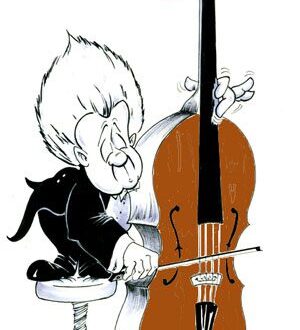How to tune a classical guitar?
Contents
- How to properly replace guitar strings?
- What and why should you play on the guitar?
- What is a tuner and how can you tune your guitar with it?
- How to tune a six-string using a synthesizer (piano)?
- The most popular guitar tuning method
- What is the essence of tuning by harmonics?
- Is it possible to tune a guitar without pressing anything, that is, along the open strings?
- How to tune the first string on a guitar?
Not only beginners, but also quite experienced guitarists are from time to time tormented by purely technical questions: how to replace a string on a guitar if it’s broken, or how to tune a completely new guitar if you forgot to do it right in the store, or if it’s out of tune after lying around for a couple of months without causes?
Musicians face such problems all the time, so you can prepare yourself for them in advance. Today we’ll talk about how to tune a classical guitar in various ways so that everything with our favorite instrument is ok!
How to properly replace guitar strings?
Before changing a string on your guitar, make sure that the mark on the bag matches the string you are going to change.
- Insert the string into the small hole on the soundboard stand. Secure it by making a loop.
- Secure the other end of the string to the appropriate peg. Insert its tip into the hole and rotate the peg in the direction in which the other strings are already stretched. Please note: the strings on the fingerboard or near the pegs should not overlap each other in any place.
- Tune your guitar. Let’s talk about this later.
Here’s what needs to be said: if you change all the strings at once, do it with caution so as not to damage the instrument. First you need to loosen all the old strings, and then remove them one by one. You cannot tighten the strings one by one – we install everything and stretch them not too much, but so that they stand evenly and do not intersect with neighboring strings. Then you can gradually raise the tuning evenly, that is, tighten the strings more: to such an extent that you can begin work on tuning them.
Remember that new strings do not hold tuning well and therefore need to be tightened all the time. By the way, you can read about how to choose the right new guitar strings here.
What and why should you play on the guitar?
On the neck of the six-string you can see six mechanical pegs – their rotation tightens or lowers the strings, changing the sound towards higher or lower pitch.
The classic guitar tuning from the first to the sixth string is EBGDAE, that is, MI-SI-SOL-RE-LA-MI. You can read about the letter designations of sounds here.
What is a tuner and how can you tune your guitar with it?
A tuner is a small device or program that allows you not only to tune a new guitar, but also any other musical instrument. The principle of operation of the tuner is quite simple: when a string is sounded, a lettered image of the note is displayed on the display of the device.
If the guitar is out of tune, the tuner will indicate that the string is low or high. In this case, while watching the note indicator on the display, slowly and smoothly turn the peg in the desired direction, while regularly tugging the tuned string and checking its tension with the device.
If you decide to use an online tuner, keep in mind that you need a microphone connected to your computer. Want to buy a tuner? Pay attention to compact models that are mounted on the headstock (where the pegs are located). This model will allow you to tune your guitar even while playing! Very comfortably!
How to tune a six-string using a synthesizer (piano)?
If you know the placement of notes on keyboard instruments, then tuning your guitar will be no problem! Simply pick the desired note (e.g. E) on the keyboard and play the corresponding string (here it will be the first). Listen carefully to the sound. Is there dissonance? Tune your instrument! Just don’t need to focus on the piano, which itself barely stays in tune; it’s better to turn on the synthesizer.
The most popular guitar tuning method
Back in the days when there were no assistant tuners, the guitar was tuned by frets. Until now, this method is one of the most common.
- Tuning the second string. Press it down on the fifth fret – the resulting sound should sound in unison (exactly the same) with the first open string.
- Tuning the third string. Hold it on the fourth fret and check the unison with the second open fret.
- The fourth is on the fifth fret. We check the sound is identical to the third.
- We also press the fifth one on the fifth fret, and check that its settings are correct using the open fourth fret.
- The sixth is pressed against the fifth fret and the sound is compared with the open fifth.
- After this, check that the instrument is tuned correctly: pluck the first and sixth strings together – they should sound identical with the only difference in pitch. Miracles!
What is the essence of tuning by harmonics?
Few people know how to tune a classical guitar using harmonics. And in general, most people don’t know what a harmonic is. Lightly touch the string with your finger just above the nut at the fifth, seventh, twelfth, or nineteenth fret. Is the sound soft and slightly muffled? This is a harmonic.
- Tuning the second string. Its harmonic on the fifth fret should sound in unison with the harmonic on the fifth fret of the first string.
- Setting up the fourth one. Let’s compare the sound of the harmonic on the seventh fret with the first string pressed on the fifth fret.
- Tuning the third string. The harmonic on the seventh fret is identical to the sound of the harmonic on the fifth fret on the fourth string.
- Setting up the fifth one. The harmonic on the fifth fret sounds in unison with the harmonic on the seventh fret of the fourth string.
- And the sixth string. Its fifth fret harmonic sounds identical to the fifth string’s seventh fret harmonic.
Is it possible to tune a guitar without pressing anything, that is, along the open strings?
If you are a “listener”, then tuning your guitar to open strings is not a problem for you! The method given below involves tuning by pure intervals, that is, by sounds that are heard together, without overtones. If you get the hang of it, then very soon you will be able to distinguish between the vibrations of the strings taken together, and how the sound waves of two different notes merge together – this is the sound of a pure interval.
- Tuning the sixth string. The first and sixth strings are a pure octave, that is, an identical sound with a difference in height.
- Setting up the fifth one. The fifth and sixth open are a clean fourth, a united and inviting sound.
- Let’s set up the fourth one. The fifth and fourth strings are also a fourth, which means the sound should be clear, without dissonance.
- Setting up the third one. The fourth and third strings are a pure fifth, its sound is even more harmonious and spacious compared to the fourth, because this consonance is more perfect.
- Setting up the second one. The first and second strings are a fourth.
You can learn about fourths, fifths, octaves and other intervals by reading the article “Musical Intervals.”
How to tune the first string on a guitar?
Any tuning method requires that at least one string of the guitar is already tuned to the correct tone. How can you check if it sounds right? Let’s figure it out. There are two options for tuning the first string:
- Classic – using a tuning fork.
- Amateurish – on the phone.
In the first case, you need a special device that looks like an iron fork with two blunt teeth – a tuning fork. It should be lightly hit and brought with the handle of the “fork” to your ear. The vibration of the tuning fork produces the note “A”, according to which we will tune the first string: just press it at the fifth fret – this is the note “A”. Now we check whether the sound of the note “A” on a tuning fork and “A” on a guitar are the same. If yes, then everything is fine, you can tune the remaining strings of the guitar. If not, then you’ll have to tinker with the first one.
In the second, “amateurish” case, just pick up the handset of your landline phone. Do you hear the buzzer? This is also “la”. Tune your guitar according to the previous example.
So, you can tune a classical guitar in different ways: by open strings, by the fifth fret, by harmonics. You can use a tuning fork, a tuner, computer programs, or even a regular landline telephone.
Perhaps that’s enough theory for today – let’s go practice! You already have enough knowledge about how to change strings and how to tune a guitar. It’s time to pick up your “sick” six-string and treat it with a good “mood”!
JOIN OUR GROUP IN CONTACT – http://vk.com/muz_class
Watch the video, which clearly demonstrates how you can tune a guitar using the “fifth fret method”:



